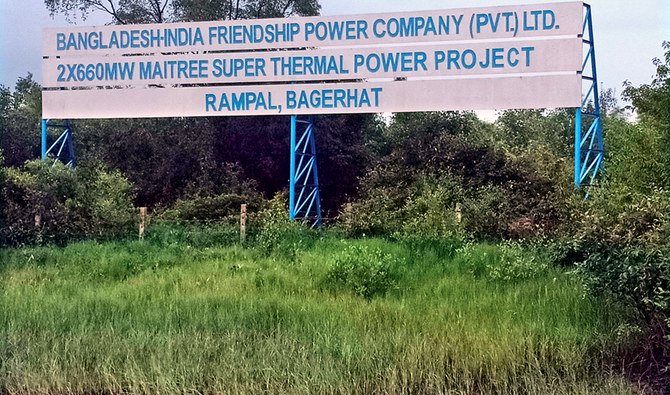UNESCO puts Sundarbans on danger list

One of the world’s largest mangrove forests has been placed on UNESCO’s danger list despite increased conservation efforts by the Bangladeshi government.
The Sundarbans, a UNESCO world heritage site covering 10,000 square kilometers in the Bay of Bengal, has come under threat from the encroachment of industrial developments.
In a bid to help preserve the region’s unique biodiversity, Bangladesh has increased the forest area designated as a conservation sanctuary from 23 percent to 52 percent, banned the extraction of natural resources there, and stepped up poacher patrols.
However, environmentalists say more urgently needs to be done, and UNESCO has called for a detailed update from the Bangladeshi government on the conservation status of the mangroves.
The reserve, which is the main habitat of the endangered Bengal tiger, is located in southwestern Bangladesh between the rivers Baleswar in the east and Harinbanga in the west.
Sixty percent of the forest lies in Bangladesh with the rest in India, and it is internationally recognized for the high biodiversity of mangrove flora and fauna both on land and in the water. UNESCO declared the forest a World Heritage Site in 1997.
UNESCO’s decision to place the Sundarbans on its danger list follows concerns from the agency and local environmentalists over the ongoing construction of the coal-powered Rampal plant on the edge of the forest.
In a recent report on the situation, UNESCO said: “Little progress has been achieved to address the significant threats to the property. Despite the committee’s requests, no serious consideration was given to possible alternatives to the construction of the Rampal power plant, and its construction is progressing.”
It added that the work was taking place in the absence of a strategic environmental assessment (SEA).
UNESCO also expressed its concerns over the building of two other power plants in Payra, the dredging of the Payra River, and several other developments and industrial works in the region.
It has urged the Bangladeshi government to allow one of its expert teams to assess the state of the mangrove area and look into further preservation measures, while also calling for an updated report on the conservation status of the forest by Feb. 1, 2020.
Based on the findings of the report, a decision on the future of the Sundarbans would then be taken at the 44th session of UNESCO to be held in Azerbaijan.
Dhaka has already initiated various projects to conserve the biodiversity of the mangrove forest.
Amir Hossain, forest conservator of Khulna circle, said the government last year increased the area of the sanctuary to cover 52 percent, banning “the collection of all types of forest resources from the sanctuary areas. It will help increase the biodiversity of the forest including wildlife and trees,” he told Arab News.
“In addition, with the help of USAID (US Agency for International Development) and GIZ (German agency for international cooperation) we have introduced smart patrolling in the mangrove forest to check the poachers’ movements and monitor the illegal encroachment of the local people inside the deep forest.
“We have developed a strong database and can monitor everything around the forest area using GPS,” Hossain added.
He said the Bangladeshi government was also working to implement the SEA of the area. “An international tender has been called in this regard and we hope to start the process very soon. Once completed, we will get an integrated environmental assessment report which will portray a clear picture of the ecology, biodiversity and other important environmental aspects of that area,” Hossain said.
The delay in the introduction of the National Oil Spill and Chemical Contingency Plan (NOSCOP) was one of the major concerns of UNESCO leading to the Sundarbans being placed on its danger list.
Dr. Fahmida Khatun, director of the natural resource management wing of the Bangladeshi Department of Environment, told Arab News that the government had already finalized a draft of the NOSCOP which would be forwarded to the cabinet committee for final approval.
However, environmentalists remain worried about continued industrialization around the area of the mangrove forest.
“The eco-system of the Sundarbans is very sensitive which is completely different to any other forest of the world. Three different parts of the Sundarbans have different types of vegetation,” Prof. Abdullah Harun, of Khulna University, told Arab News.
Harun, a renowned Bangladeshi environmentalist, added: “From an environmental point of view, Rampal power plant is still a big concern for us. Based on this power plant, rapid industrialization is also going on in that area and we anticipate that this industrialization flow will increase, which will have dire consequences for the existence of the mangrove.”
